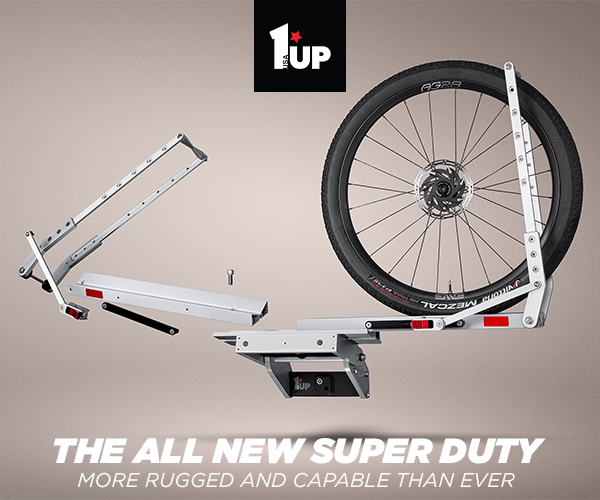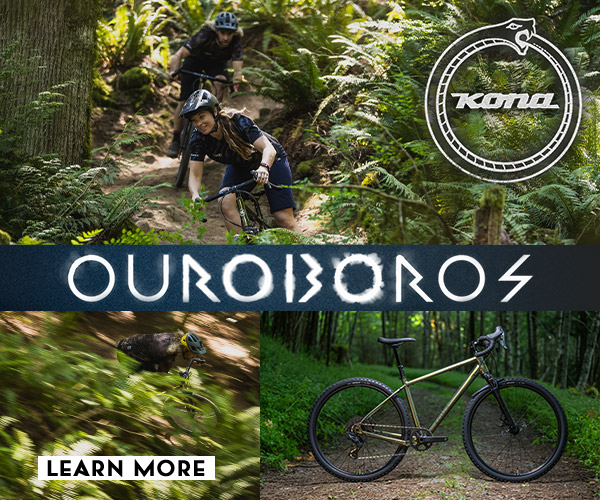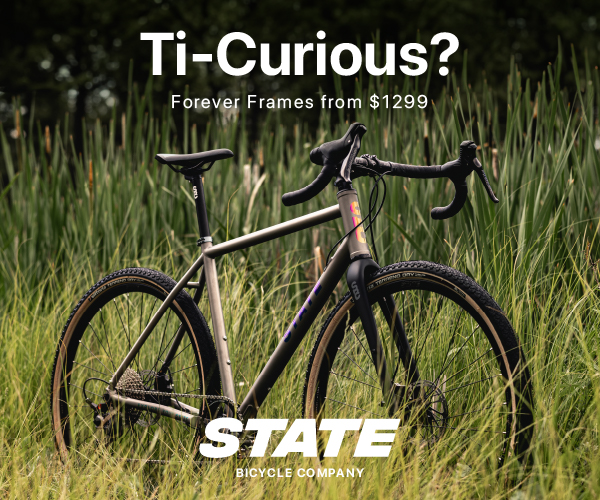When we highlight a destination, it’s usually home to great riding, a special event, or a unique shop. The town of Kitty Hawk on the Outer Banks of North Carolina is different. That’s where, more than 120 years ago, two midwestern bike mechanics changed the world. Travis, a midwestern bike mechanic himself, tells us about his surprisingly cathartic visit to the Wright Brothers National Memorial.

Most of you probably know that Wilbur and Orville Wright were avid cyclists. Before they built their first flying machine, they ran a successful bike shop in Dayton, Ohio. That was all I knew about the Wright brothers when I went to the Outer Banks of North Carolina for a family reunion. We were just 15 miles north of Kitty Hawk, which seemed like a great place to kill an afternoon. I had no idea it would be one of the most emotionally rich experiences of my life.



The Wright Brothers National Memorial is technically in the town of Kill Devil Hills, which was an area within Kitty Hawk until it was incorporated in 1953. It overlooks the spot where, on December 17th, 1903, the brothers took turns performing their first sustained powered flights. And just so we can get it out of the way, there is some debate about whether they were actually the first to perform sustained powered flights. But for the purposes of this story, it doesn’t really matter. Their ingenuity, perseverance, and skill are beyond doubt. As is their background in bikes.



The 1880s and 1890s were a boom time for cycling. The safety bicycle had been perfected, as had the pneumatic bicycle tire. And the boom was strong in the Wrights’ home of Dayton. Wilbur and Orville would regularly embark on lengthy bike tours (as described in the above excerpts from an 1892 letter to their sister, Katherine). And Orville had achieved occasional success at racing. The League of American Wheelmen (now called The League of American Bicyclists) happened to hold a summit in Dayton in 1892 that attracted thousands of riders to compete in multiple events. That very year, Wilbur and Orville had just handed over their printing business to their older brother, Lorin, and founded the Wright Cycle Exchange, which would eventually become the Wright Cycle Company.



The shop began as a retailer for various brands of complete bikes, but the brothers would eventually produce their own. The “Van Cleve” and lower-priced “St. Clair” models were made of components the brothers chose themselves. Still, they allowed substitutions for an extra fee. It was a bit like a modern high-end bike brand that’ll do carbon wheels or a Fox Factory fork if you pick it on the drop-down menu at checkout. And their bikes were indeed high-end, going for about $65 in 1896, which is about $2,500 today.



For the most part, the Wrights’ bikes were not manufactured in-house. But some of their components reportedly were, including a hub of the Wrights’ own design. It was less prone to oil leaks, would adjust by moving the cups within the hub shell, and used bearing cones in the place of normal locknuts so you had two spares if need be. The brothers were clearly manufacturing something, because there was a lathe on the Wright Cycle Company’s second floor run by a machinist named Charles Taylor, who would later become a vital part of their flyer’s completion.


Around this time, the exploits of a German engineer named Otto Lilienthal had caught the brothers’ attention. Lilienthal designed and flew various gliders starting in 1891, but he would die from injuries sustained in a crash in 1896. The quest for flight was experiencing its own boom in the late 19th century, with a number of experiments happening in France, Russia, New Zealand, and the U.S.. But as tales tell, the event of Lilienthal’s death became a catalyst in the brothers’ own quest for flight. Wilbur wrote a letter to the Smithsonian in 1899 (on Wright Cycle Company stationery) requesting whatever research they had either collected or produced on the subject.


But like Lilienthal, the brothers got much of their useful data by studying birds. Not just their structure, but how they interact with the wind. Wind was a big deal for the brothers. Wilbur once poignantly said, “No bird soars in a calm,” decades before the first motivational poster graced a guidance counselor’s wall. So, he wrote to the U.S. Weather Bureau in search of the most consistently windy places in the country. Combined with the brothers’ need for soft sand—nature’s foam-pit—the data they received led them to Kitty Hawk, North Carolina.



This short stretch of the Outer Banks looked different 125 years ago. It was a barely inhabited fishing community that once took Wilbur two harrowing days to reach by boat. Now there’s a bridge, two towns, and scores of trees, shrubs, and grasslands that were planted to stabilize the shifting sands.
This is where one of mankind’s greatest achievements occurred, but when I got there, I remember feeling a bit “meh.” The same way some people react to seeing the Mona Lisa for the first time. It had been built up so much that I expected to feel something that I just wasn’t feeling.

But when I reached the visitor’s center, a presentation had just started. I showed up just in time to learn about their admiration for Otto Lilienthal. Then, about the reasons they came to Kitty Hawk. Then, about their machinist, Charlie Taylor, who made an aluminum-block engine from scratch because nothing on the market had an adequate power-to-weight ratio.
Suddenly, the Wright brothers’ journey felt uncannily relatable. I’ve made things I needed because they didn’t exist. I’ve sought out remote places because of their rare air and earth. I’ve had heroes who died chasing their passion, which was also my passion.


Again, I didn’t know much about the Wright brothers beyond the patriotic mythologizing I picked up in school. But hearing their story told in person made Wilbur and Orville feel less like superhumans and more like humans. Humans who really loved bikes. That brought their achievements into shockingly clear focus.
Of course, I had long known that it wasn’t a coincidence that it was cyclists who finally cracked gravity’s code. We’ve all used the word “flying” to describe how we experience a particular stretch of road or a section of trail. But it wasn’t just that the Wright brothers were uniquely suited to pursue flight. It’s that they were uniquely suited for every task along the way. I had never envisioned those tasks through the eyes of a passionate bike mechanic. I had never put myself there. And at that moment in Kill Devil Hills, I was literally there.



But the presentation wasn’t even over yet. As the story builds to the crescendo of December 17th, it pauses to discuss how the Wrights’ first powered flyer worked. Because the pilot was positioned head-first to limit wind resistance (yet another choice a cyclist would make), it would have been difficult to use their feet to help control the aircraft. Their left hand was needed for a stick that adjusted the pitch (nose up/down). And because there was no throttle control, the right hand was needed to hold on for dear life. The yaw (left/right turn) and roll (left/right tilt) were managed in unison, and in a way that still gives me goosebumps when I think about it.


Drawing on their knowledge of birds, the brothers designed the wings to flex. That flex was conducted by cables attached to a sliding cradle under the pilot’s hips. The trailing edges of one set of wings would angle down while simultaneously angling up on the opposite set. Apparently, the brothers came up with this concept when one of them twisted a bicycle inner-tube box that was open on both ends. Their method for controlling that motion on the flyer wasn’t just practical. It was intuitive, because it mimicked the way Wilbur and Orville would steer a bike.

This is a factor I hadn’t considered until I finally picked up a book about the brothers. No matter how marvelous their creation was, they put tremendous value on the skill required to fly it. That’s a big reason why they would spend months at a time running their glider at Kitty Hawk. I should note here that this would not have been possible without their sister, Katharine. The public would eventually know her as a crucial negotiator and media manager as the brothers’ fame grew. But that fame would have never materialized if it weren’t for her support in the early years. She ran their business while they were away despite high tensions with Charlie Taylor, who was still handling its operations. She took care of their family, including their widowed father.
This allowed the brothers to remain focused and take their time learning to fly. Speaking at a conference in Chicago, just months before he and Orville would complete their first powered flights, Wilbur discussed the challenge of piloting their glider. “The birds’ wings are undoubtedly well designed indeed, but it is not any extraordinary efficiency that strikes with astonishment, but rather the marvelous skill with which they are used.”

Again, this had me picturing what it must have felt like to be on this quest. Even if flight were possible, what’s the use if it takes such rare talent to perform safely? Could it be performed safely? I haven’t read any books about Johannes Gutenberg or Eli Whitney. Maybe the printing press and cotton gin were inspired by passions just as primal as those shared by cyclists. But they also had a clear, direct line from prototype to profit. A flying machine did not. Even today, the phrase “flying machine” sounds like fantasy. Nevertheless, two self-funded bike nerds believed for years that they would be the ones to figure it out.



Eventually, the presentation moved outside. The rear doors of the visitor’s center open to the field where the first four flights took place. One large stone marks the end of a rail the brothers embedded in the ground to act as a takeoff runway. That rail was just wide enough to fit between the flanges of the bicycle hubs mounted to a cart that carried the flyer before takeoff. It’s safe to assume these were the hubs the brothers themselves designed.


Four smaller stones mark the spots where each flight landed. One is 125 feet away, the next 175 feet, then 200 feet. The fourth stone stands 852 feet away. I stared down the runway at that distant spec of granite, with my feet planted on that sandy ground and my thoughts fixed on that windy day.
It made me proud to be a cyclist. Proud to be a human.









